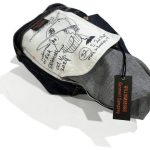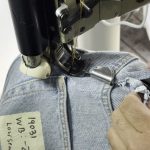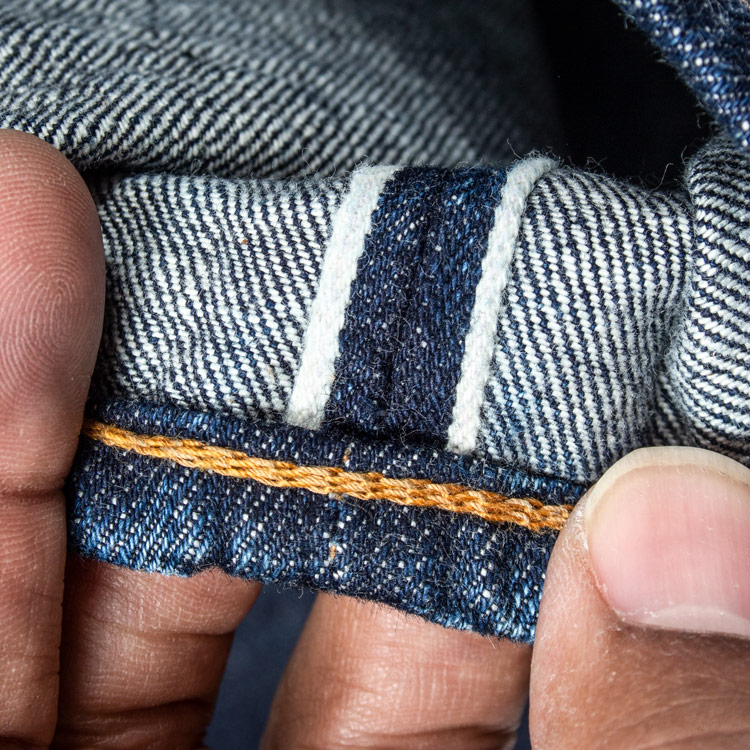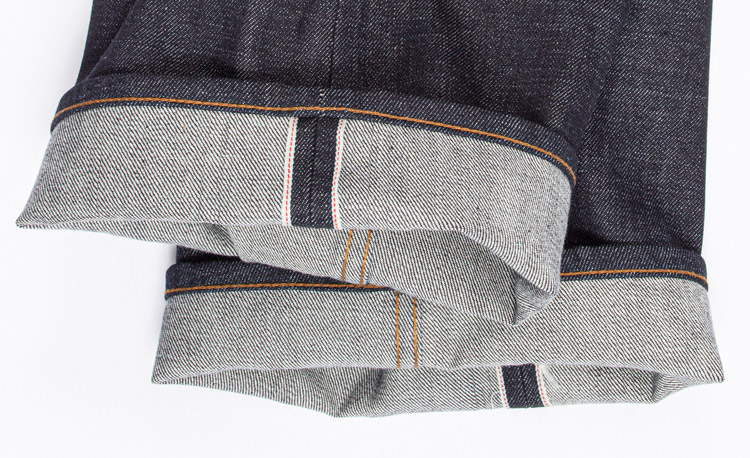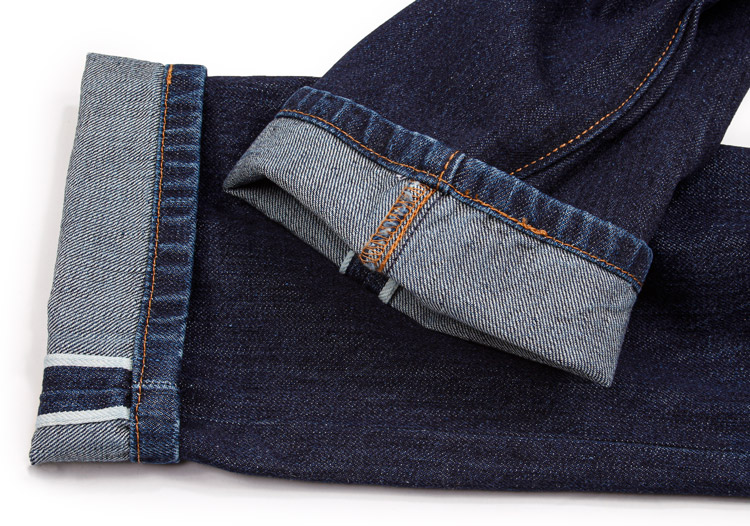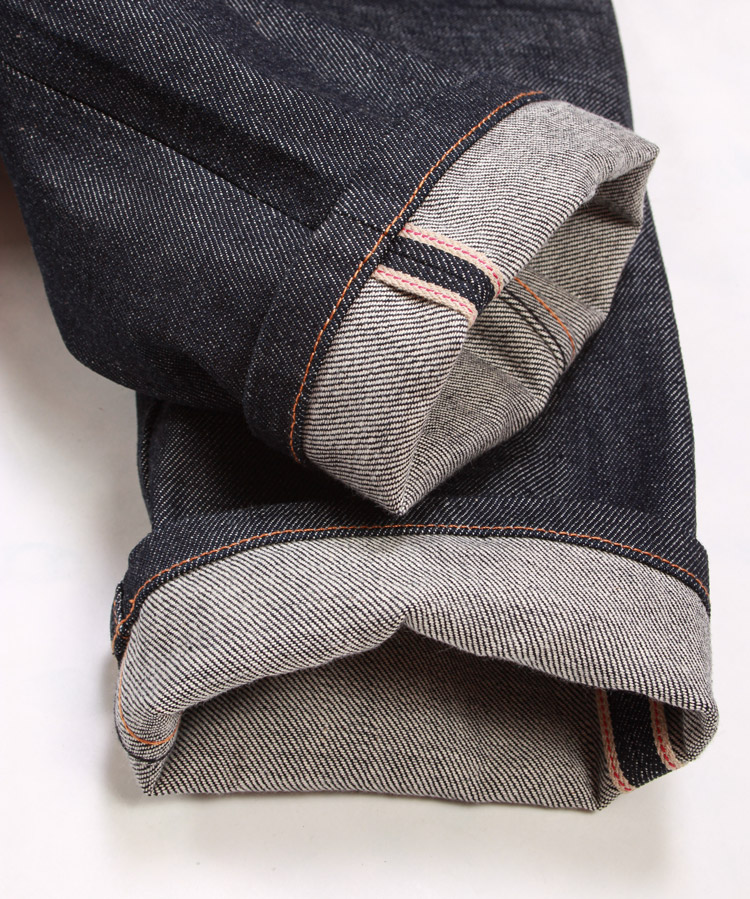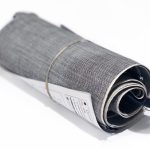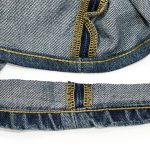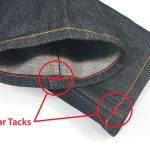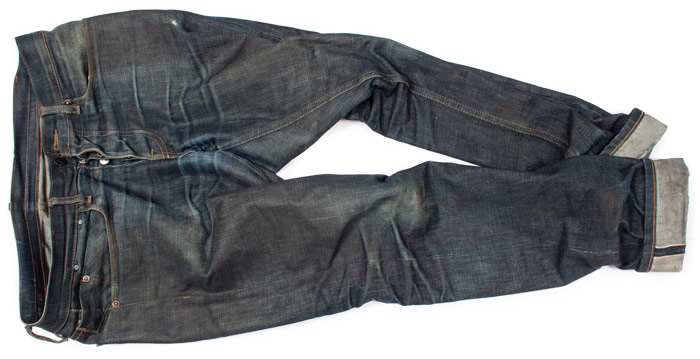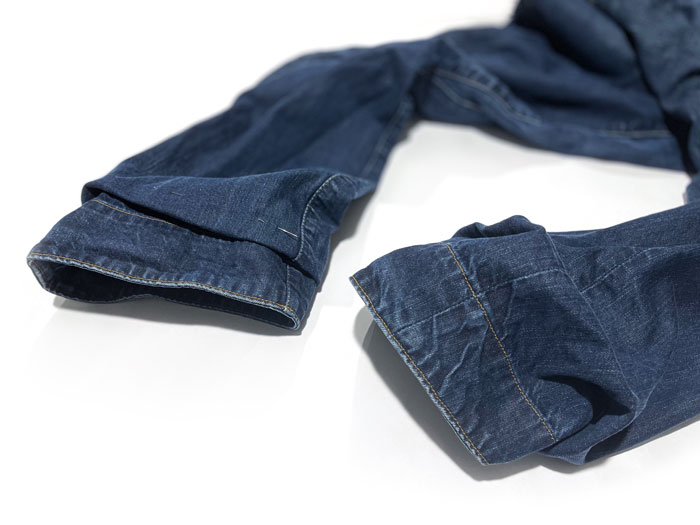
We recently added an option for special request alterations that fall outside of our regular services. For example, shortening the inseam on these vintage Levi’s Engineered Jeans is far more time-consuming than chain stitch hemming. After all, you would not want to lose the sloped hem shape that uniquely identifies these by cutting them straight like regular jeans. This calls for more than our trouser or chain stitch hemming services.
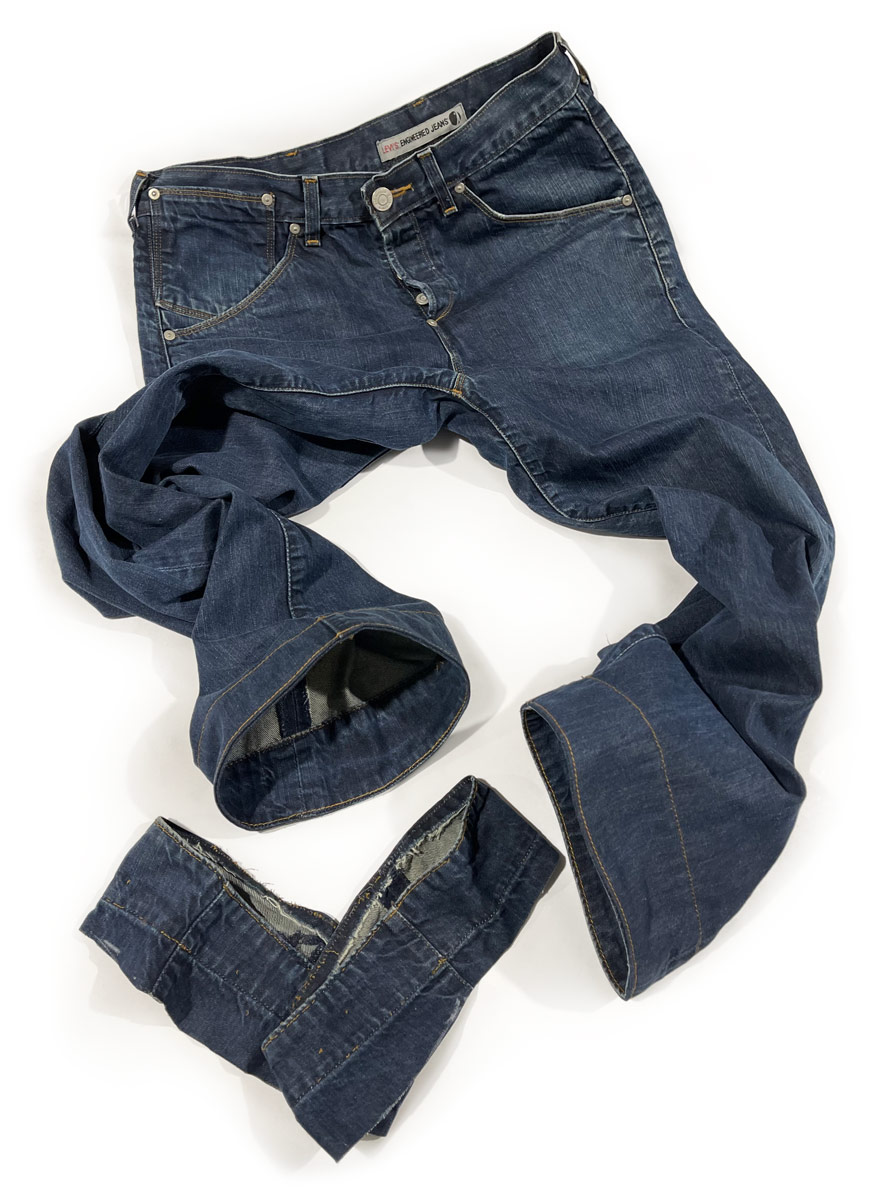
For this style, we first record the size and shape of the original hem by creating a pattern to recut the newly positioned leg opening. After, we remove the inside panel at the hem stitch by stitch to keep it intact.
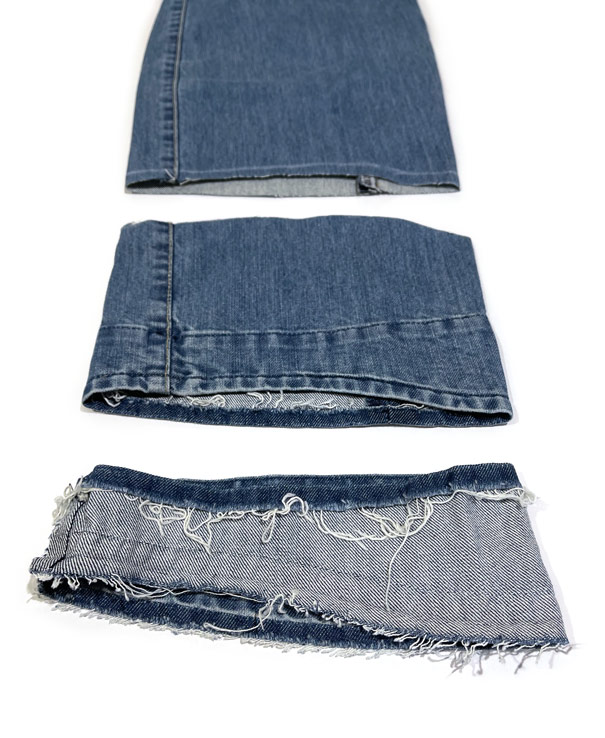
These jeans have a twisted leg, so measuring the inseam can be tricky. On jeans with a leg twist, you can’t just follow the inseam line down with the measuring tape. Instead, you must follow the shape of the leg down without turning under the seam. Following the inseam line on a twisted leg will ultimately mean that leg will be slightly shorter.
Finally, after the jeans are cut-down, the original inside hem panels are sewn back into the leg opening. Finished, the jeans keep the look of the original factory sewing and stitching while being customized to a concise length.


